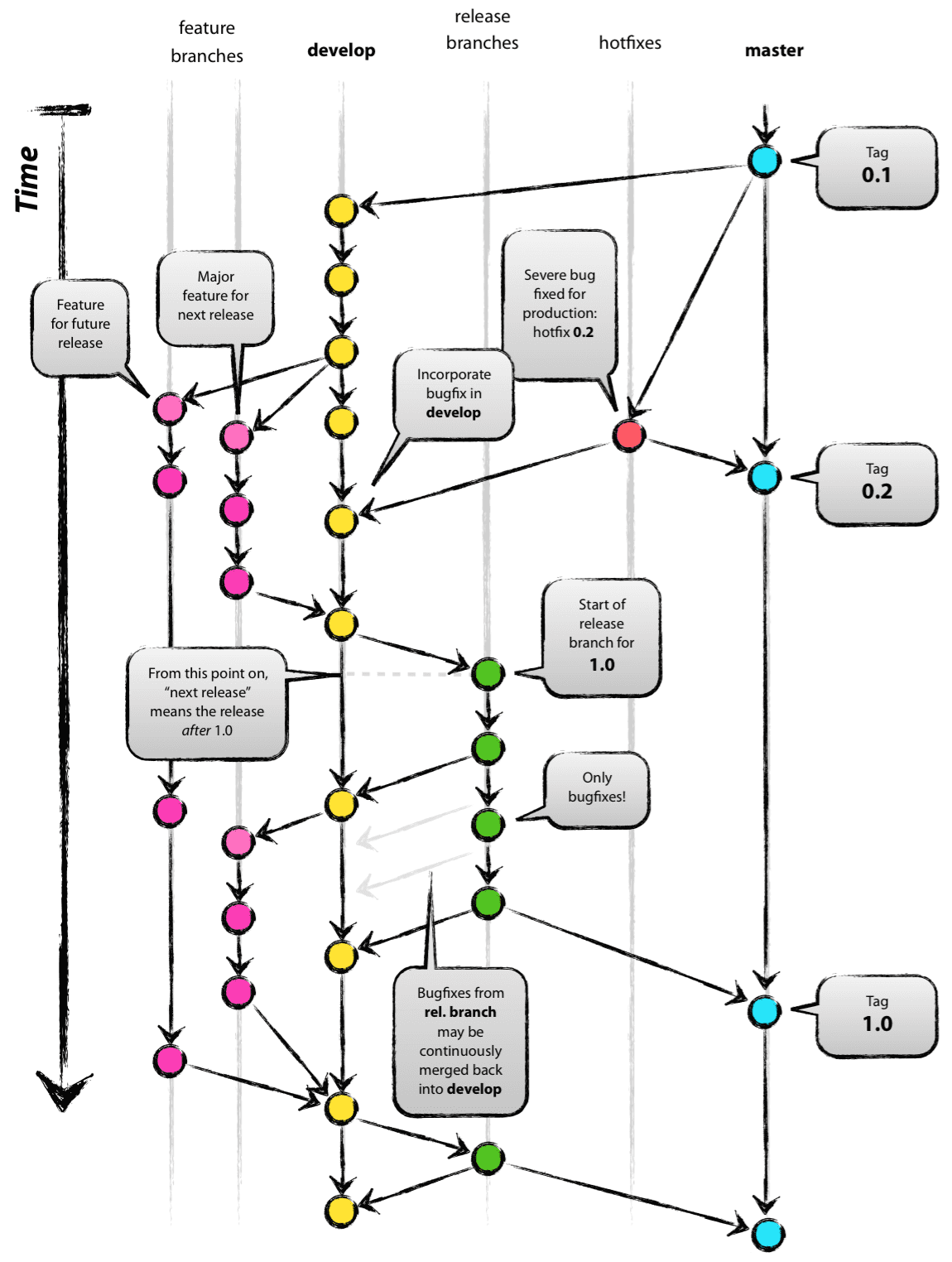
Overview
Teaching: 15 min
Exercises: 0 min
Exercises: 0 min
Questions
- What is a good branch layout to simplify maintenance and release preparation?
- Discuss typical branch layouts.
Vincent Driessen model

(c) Vincent Driessen, licensed under CC BY-SA.
- Link to original post.
- Very popular and highly visible.
- Two long-lived branches:
developandmaster. - New features are developed on feature branches.
- Feature branches branch off from
develop. masteris the latest stable release by definition.masterholds all release versions.- Everything merged to
developis ready to be released.
Observations from real life use of this model
- If the project is typically cloned by users, default branch should be
master - If the project is typically cloned by developers, default branch should be
develop - If the project is typically cloned by developers and the default branch is
master, then there is confusion and developers either complain about finding only old code or they commit to the wrong branch. - Less confusing might be to rename
developtomasterandmastertostable. - Model is not ideal if you need to support past versions and publish patches for past versions.
- In the Vincent Driessen model
every commit on the
masterbranch is a new release by definition but publishing patches to past releases leads to release commits which are not on themasterbranch. - The Vincent Driessen model model offers no protocol for discriminating feature pull requests (PRs) based on their target major or minor version. For maintainers it may therefore be difficult to accept an API-preserving feature PR after having accepted an API-breaking feature PR. For contributors it may be difficult to communicate the release visibility intent of a patch.
- Good if you do not distribute the stable release (e.g. if you run it on your servers).
Semantic branching model
- Based on semantic versioning.
- https://dev-cafe.github.io/branching-model/
- Good if you distribute code and support past versions.
- Separate development lines towards major, minor, or patch release.
- Communicate to contributors the meaning and effect of each branch.
- Communicate to maintainers the release visibility intent for each patch.
- Make it clear and simple to decide both for contributors and maintainers whether patches affect the next major, minor, or patch version.
Document and enforce your branch naming and strategies
- Document recommended branch naming.
- Document your branching layout/strategy.
- Use meaningful version numbers: e.g. semantic versioning.
- Require your developers to follow it (code review).
- Write-protect your main development line and release branch(es).
Tag your releases
- Tags are also just pointers to commits.
- While branches are mutable, tags are (typically) immutable.
- Tags can carry extra annotation.
- Use annotated tags (then it is clear who created the tag).
- Always tag your releases:
$ git tag # list all tags
$ git tag -a v1.5 -m 'release v1.5' # create annotated tag
$ git push origin v1.5 # share tag to upstream (origin)
$ git push origin --tags # push all tags
